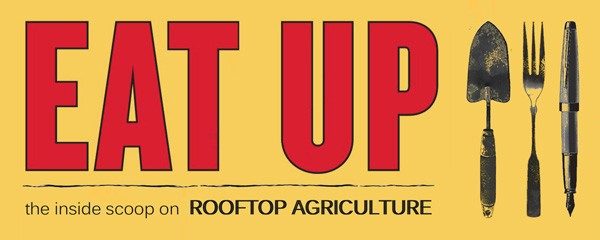standing room only
The packed audience sat in anticipation as I introduced three panelists at the international CitiesAlive conference on Friday.
The conference, held this year in Philadelphia, is organized annually by the Toronto-based Green Roof Professional (GRP) accreditation organization Green Roofs for Healthy Cities. Unlike other international trade conferences, CitiesAlive is unique in its ability to attract a multidisciplinary audience. The three-day event acted as a magnet for designers, policy makers, scientists, material vendors, rooftop farmers, green roof enthusiasts, and industry leaders. The diversity was moving, as was each presenter’s ability to capture the interest of these audiences simultaneously.
Out of the conference’s 12 panel discussions, two focused on rooftop agriculture. The discussion that I was asked to moderate, Design for Food Production and Biodiversity, highlighted built projects that promote either rooftop farming or green roof biodiversity. While other sessions on green roof policy and key international projects were moderately attended, this panel discussion was filled to the brim, with standing room only. Rooftop agriculture is one hot topic.
Scott Torrance, Founding Principal of Scott Torrance Landscape Architect Inc, discussed his process of ecological green roof design. He developed a biodiversity checklist for these rooftop environments, which considers species diversity, nesting habitat, water sources, and other elements that promote wildlife occupation. Scott’s talk posed interesting questions with regard to the development of pollinator habitat and pollinator corridors on rooftop farms.
Next, Keith Agoada, President of Urban-Ag, energetically described a demonstration greenhouse that he built on top of a nightclub in California. The structure was designed and erected with a “guerrilla” approach, without the assistance of an architect or waterproofing consultant. The small greenhouse is visible from an adjacent elevated highway, and is visited regularly by guests and performers from the nightclub below.
Lastly, Anna Suardini, a Technical Sales Coordinator for American Hydrotech, Inc., discussed the Gary Comer Youth Center in Chicago. This community center houses a 7,400 sf rooftop row farm that is completely enclosed by higher levels of the surrounding building. The farm is shielded from the elements, and provides children from the surrounding compromised neighborhood with a chance to work with plants and soil in a safe environment. The rooftop farm’s success quickly lead to the development of a larger, at-grade farm near the building. These community agricultural nodes are effectively fostering a positive food production ethic, whereby children and adults alike become reconnected with their food.
 EAT UP
EAT UP
This sounds like an extremely exciting conference. I am particularly captivated by the youth center in Chicago. The location of the rooftop farm clearly takes advantage of the towering buildings of the city in a useful way.